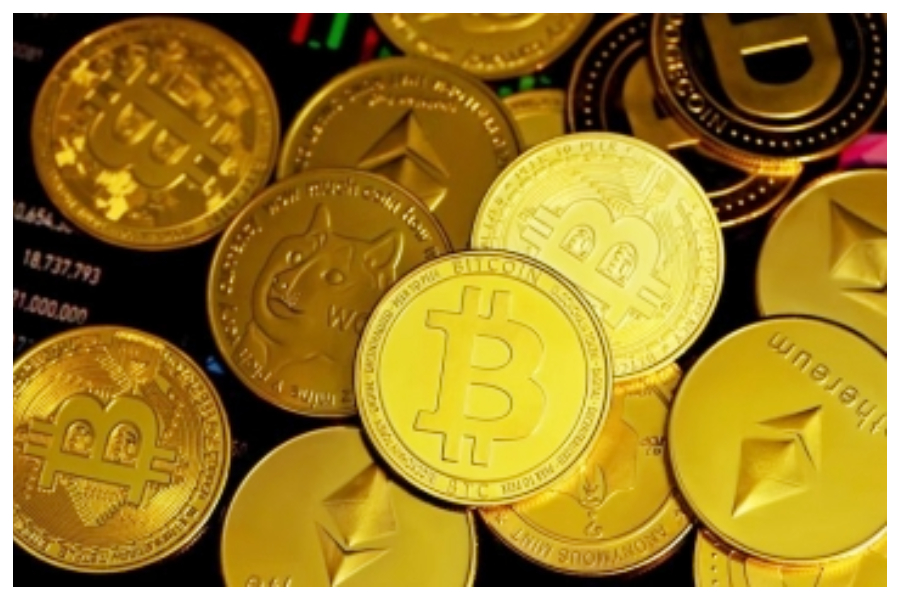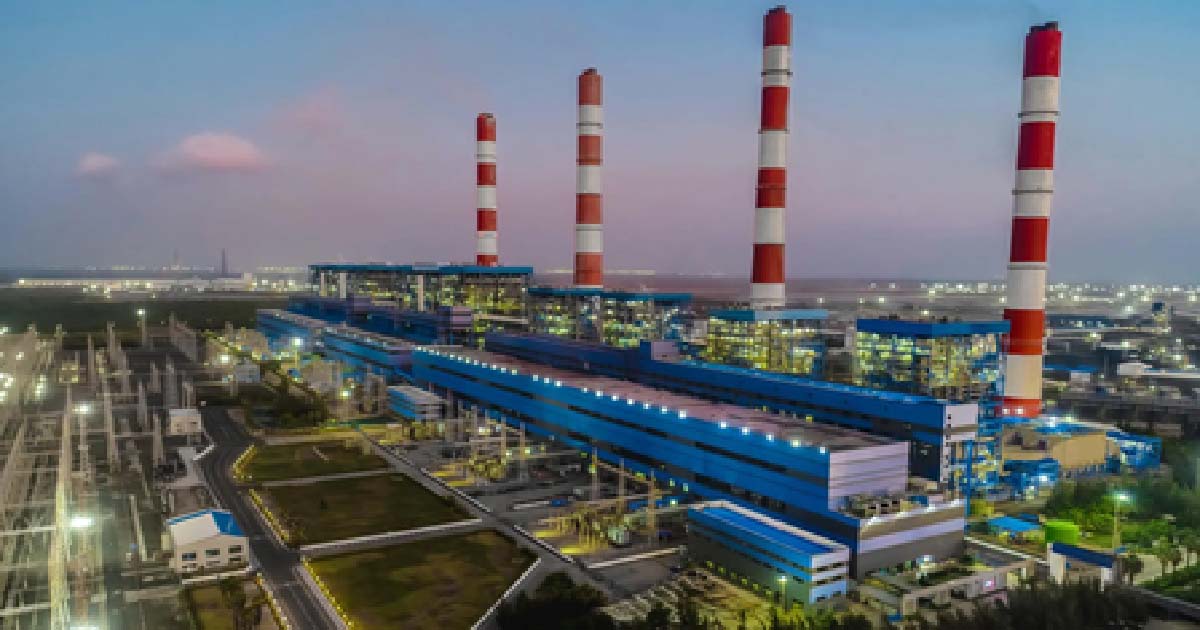Business
End of the crypto craze? Indian investors wary as mega sell-off continues

As foreign portfolio investors continue to pull out money from the Indian equity market, the sell-off in the crypto market and the digital asset space has also accelerated in the wake of global economic meltdown.
More than $200 billion were wiped off the entire cryptocurrency market this week and the globally crypto market capitalisation fell below $1 trillion for the first time since February 2021, according to data from CoinMarketCap.
The already sinking cryptocurrency market in India is also witnessing a huge sell-off as the prices of Bitcoin and other cryptocurrencies nosedive amid volatile market conditions triggered by factors like high inflation, rising interest rates, the Russia-Ukraine war, and China lockdowns.
According to experts, crypto investors and traders in India are currently exercising caution and a distinct dip in crypto buying has been noticed.
Nischal Shetty, co-founder of cryptocurrency exchange WazirX, said: “Indian investors are cautious and are taking the ‘wait and watch’ approach.”
Bitcoin (BTC), the world’s largest cryptocurrency, has plunged about 70 per cent since its record high of $69,000 in November last year.
It was hovering around Rs 20,000-Rs 21,000 per coin this week.
According to analysts, Bitcoin may hit a grim $14,000 this year at this rate.
Smaller cryptocurrencies, which tend to move in tandem with Bitcoin, also fell.
Ethererum, the second-largest digital token, fell as much as 12 per cent to $1,045, a new 15-month low.
The current decline means that Ethererum has shed 77 per cent of its value since November 2021.
According to Cointelegraph, Ethereum sell-off resumed this week, with its price risking another 25 per cent decline in June.
However, in such a gloomy scenario, India’s own Gari digital token by short-video making app Chingari has risen about 40 per cent.
Chingari, the fastest-growing Blockchain social app, this week announced the ‘GARI Mining’ programme to empower 4 crore monthly average users (MAU), becoming the first social app in the world to offer crypto to its creators and users on its platform.
“This programme will ensure a level playing field for big and humble creators. Now, creators and users on the app can earn GARI tokens which can be traded on exchanges for money and creators will not be at the mercy of brand collaborations as their only source of income,” said Sumit Ghosh, Co-founder and CEO, Chingari and GARI token.
Meanwhile, the fate of cryptocurrencies in India is still hanging in balance, and the much-awaited crypto bill is yet to see the light of the day.
In April, Finance Minister Nirmala Sitharaman reiterated her doubts about the size of the cryptocurrency market worldwide and stressed the need for a regulatory mechanism acceptable to all countries to prevent its use to launder money and fund terrorism, which, she said, were big concerns for India.
India distinguishes between cryptocurrency and crypto assets as a result, and the minister had in February announced a 30 per cent tax on income from these transactions, which includes a 1 per cent deduction at source.
The country is poised to have its own digital currency by the Reserve Bank of India (RBI) next year that will be based on Blockchain technology.
According to Sathvik Vishwanath, Co-founder and CEO, Unocoin, “the cryptocurrencies industry is fast evolving and hence it would need regulations to be constantly updated”.
“It is unlikely to be successful if we just try to bring guidelines for cryptos,” he said.
Not only cryptocurrencies, investors of DeFi (decentralised finance) platforms also need to exercise “caution and scrutiny” amid growing concerns about the liquidity of this certain type of cryptocurrency service, experts have warned.
The warning came as Celsius Network, a DeFi platform and one of the largest crypto lenders, announced that it was “pausing all withdrawals, Swap, and transfers between accounts” for its 1.7 million clients.
“The wider crypto ecosystem has been rocked again — not by ‘real’ cryptocurrencies like Bitcoin, but by DeFi,” said Nigel Green, CEO of deVere Group, one of the world’s largest independent financial advisories.
“There are legitimate and serious concerns about networks’ high yields, links to failed dollar-pegged stablecoin Terra, and reserves,” said Green, urging people to exercise caution and scrutiny on crypto lending firms which offer clients lucrative double-digit yields on assets like Bitcoin and Ethereum.
Decentralised finance or DeFi offers financial instruments without relying on intermediaries such as brokerages, exchanges, or banks by using smart contracts on a Blockchain.
Business
Govt plans AI-based eKYC, global credential verification in DigiLocker

New Delhi, Nov 8: The Ministry of Electronics and IT on Saturday announced plans for AI-based eKYC and global credential verification in the DigiLocker platform.
The platform has evolved from a secure document storage service into a trust layer that connects citizens with ministries and departments, according to an official statement.
National e-Governance Division (NeGD), Ministry of Electronics and IT organised the National Conference on DigiLocker to discuss and showcase how DigiLocker evolves into a cornerstone of trust, convenience, and efficiency across government, education, and industry sectors.
The conference underscored the transformative role of DigiLocker in facilitating paperless governance, inclusive education, and secure digital services.
“DigiLocker serves as the trust layer connecting citizens, ministries, and departments—enabling secure, interoperable, and accountable digital governance. Our vision is a future where every digital interaction is trusted, every citizen empowered, and every institution accountable” said S. Krishnan, Secretary of MeitY, who chaired the conference.
Krishnan said that the platform advances India’s digital journey from connectivity to capability, service delivery to self-reliance and now from digitalisation towards trust.
Abhishek Singh, Additional Secretary of the Ministry of Electronics and IT, outlined the future of DigiLocker with AI-based eKYC and global credential verification, positioning it as a global model for paperless governance.
Presentations were made on integration of Digi Locker with Pension and Treasury systems in Maharashtra and with over 500 services through Sewa Setu Portal in Assam, the statement noted.
Seven states, including Assam, Himachal Pradesh, Madhya Pradesh, Meghalaya, Kerala, Maharashtra, and Mizoram, have been recognised as “DigiLocker Accelerators” for their distinct achievements.
DigiLocker allows citizens to access, verify, and share IDs, financial credentials and certificates securely.
Business
Mumbai-London Air India Flight Delayed By Nearly 7 Hours Due To Technical Snag, Passengers Stranded At Airport

Mumbai: Air India flight AI129, scheduled to depart from Mumbai to London Heathrow at 6:30 am on Saturday, November 8, 2025, faced a major delay after developing a technical problem shortly before takeoff. The issue left passengers stranded for several hours at the Chhatrapati Shivaji Maharaj International Airport, causing major inconvenience.
According to reports, initially, announcements indicated a brief 30-minute delay, but boarding began only around 6:00 am. After passengers boarded and took their seats, the aircraft remained stationary for over an hour. Crew members later informed passengers that due to technical difficulties, they would need to disembark for safety reasons.
By around 8:15 am, all passengers were asked to exit the plane for additional security checks, which included the re-inspection of hand baggage. Many travelers expressed frustration over the prolonged uncertainty and the lack of sleep following the early morning schedule.
Air India officials clarified that the disruption was caused by aircraft-related technical issues and not linked to the airline’s Maintenance and Safety System (AMSS). Ground staff continued to assist passengers while engineers carried out detailed inspections on the aircraft.
Later, the airline announced that the revised departure time was set for 1:00 pm. To ease passenger discomfort, refreshments and meals were served at the airport lounge. Airline representatives assured that all necessary support would be provided until the flight was cleared for departure.
An Air India spokesperson explained the situation, stating, “Flight AI129 scheduled to operate from Mumbai to London on November 8 returned to bay shortly after pushback due to a suspected technical issue. Passengers were disembarked and the aircraft is undergoing checks. Meanwhile, the crew has come under the mandatory Flight Duty Time Limitation (FDTL) protocol, restricting them from operating immediately.”
The spokesperson further added, “We regret the inconvenience caused to passengers due to this unforeseen situation. Our ground team in Mumbai is providing immediate assistance, including serving meals and ensuring passenger comfort. Every effort is being made to fly passengers to their destination at the earliest. At Air India, the safety and wellbeing of passengers remain our top priority.”
Business
How Adani’s Rs 30,000 crore Bhagalpur power project will change Bihar’s fortunes forever

Ahmedabad/New Delhi, Nov 7: The 2,400 MW Bhagalpur Power Project, being developed by the Adani Group with an outlay of Rs 30,000 crore, marks a turning point in Bihar’s economic story — bridging its energy gap, reviving industry, and creating opportunities for its 13.5 crore citizens.
For the first time in decades, the state is witnessing a wave of serious private investment.
The plain fact is that for over half a century, Bihar has remained on the margins of India’s industrial story. Despite its demographic strength and strategic location, the state has struggled to attract private investment or build a sustainable industrial base.
The data tell a sobering truth: Bihar’s per capita GDP stands at barely $776, while its per capita power consumption — 317 kilowatt hours (kWh) — is the lowest among major Indian states.
In contrast, Gujarat consumes over 1,980 kWh per capita and has a GDP per capita of $3,917.
This is not a mere coincidence. Power and prosperity move together. Where there is reliable electricity, industries grow, jobs are created, and incomes rise.
Where there isn’t, human potential migrates — literally. Bihar today supplies nearly 34 million workers to other states; its youth are forced to seek livelihoods elsewhere because industry within the state has no power to thrive.
It is against this backdrop that the Bhagalpur (Pirpainti) Power Project, being developed by the Adani Group with an investment commitment of Rs 30,000 crore, takes on historic significance. It is not just a project — it is Bihar’s opportunity to plug into India’s growth grid and finally claim its share of industrial progress.
Bihar has seen little private industrial activity in half a century. In the past five years alone, it has recorded virtually no new large-scale projects. The state’s dependence on agriculture remains high — nearly 50 per cent of its working population is engaged in farming, forestry, or fishing, while only 5.7 per cent are employed in manufacturing.
The 2,400 MW Bhagalpur Power Project, originally conceived by the Bihar State Power Generation Company Ltd (BSPGCL) in 2012, was revived by the government in 2024 through a transparent e-bidding process after earlier attempts failed.
Four credible bidders — Adani Power, Torrent Power, Lalitpur Power Generation, and JSW Energy — participated. Adani Power emerged as the lowest bidder at Rs 6.075 per kWh, a tariff lower than comparable bids in Madhya Pradesh (Rs 6.22–Rs 6.30 per kWh).
Notably, no land transfer was involved. The land, acquired over a decade ago for the project, remains fully owned by the Bihar government, leased at a nominal rent under the Bihar Industrial Investment Promotion Policy 2025. After the project term, it reverts automatically to the state.
In an era where investor confidence depends on transparency and governance, the Bhagalpur model stands out as a template for responsible investment — balancing public ownership with private efficiency.
Bihar’s electricity demand has grown sharply in recent years, but supply has not kept pace. The state’s installed generation capacity of about 6,000 MW lags behind its peak demand of 8,908 MW (FY25), forcing it to import power from the national grid.
According to the Central Electricity Authority (CEA), the demand is projected to almost double to 17,097 MW by FY35. Without new generation projects, the state risks widening its energy deficit — limiting industrial expansion, weakening job creation, and constraining overall growth.
The Bhagalpur project can help fill this critical gap. By adding 2,400 MW to Bihar’s grid, it will supply nearly one-fourth of the state’s projected additional power needs over the next decade, according to people close to the development.
Moreover, infrastructure investments of this magnitude generate vast employment. As housing and infrastructure expert V. Suresh notes, every Rs 1 crore invested in infrastructure creates 200–250 man-years of employment across 70 trades.
By that metric, the Bhagalpur project alone could create millions of man-days of work — offering Bihar’s unskilled and semi-skilled workers local opportunities in construction, logistics, operations, and allied services.
According to people in the know, a reliable power supply will also open the door to downstream industries, expansion of manufacturing zones, and the development of logistics and transport corridors—unlocking Bihar’s potential in food processing, textiles, engineering, and MSMEs.
Bihar’s challenge has never been its people — it has been its power. The Bhagalpur project signals a crucial shift in the state’s development trajectory: from subsidy-driven survival to investment-led growth. It embodies what Bihar needs most — confidence from credible investors, infrastructure that scales, and energy that empowers.
For too long, Bihar’s youth have left home to light up other states’ factories and cities. The Bhagalpur project could finally begin to reverse that flow — bringing power, purpose, and prosperity back to where they belong.
-

 Crime3 years ago
Crime3 years agoClass 10 student jumps to death in Jaipur
-

 Maharashtra1 year ago
Maharashtra1 year agoMumbai Local Train Update: Central Railway’s New Timetable Comes Into Effect; Check Full List Of Revised Timings & Stations
-

 Maharashtra1 year ago
Maharashtra1 year agoMumbai To Go Toll-Free Tonight! Maharashtra Govt Announces Complete Toll Waiver For Light Motor Vehicles At All 5 Entry Points Of City
-

 Maharashtra1 year ago
Maharashtra1 year agoFalse photo of Imtiaz Jaleel’s rally, exposing the fooling conspiracy
-

 National News1 year ago
National News1 year agoMinistry of Railways rolls out Special Drive 4.0 with focus on digitisation, cleanliness, inclusiveness and grievance redressal
-

 Maharashtra12 months ago
Maharashtra12 months agoMaharashtra Elections 2024: Mumbai Metro & BEST Services Extended Till Midnight On Voting Day
-

 National News1 year ago
National News1 year agoJ&K: 4 Jawans Killed, 28 Injured After Bus Carrying BSF Personnel For Poll Duty Falls Into Gorge In Budgam; Terrifying Visuals Surface
-

 Crime1 year ago
Crime1 year agoBaba Siddique Murder: Mumbai Police Unable To Get Lawrence Bishnoi Custody Due To Home Ministry Order, Says Report












